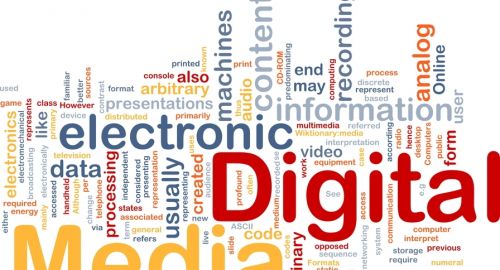A while back, I attended a Ragan Communications Social Media Roundtable in Chicago. It was perfect timing, because I’ve felt lately as if my relationships with my steady collection of digital tools and resources has hit a rut. After getting more than a few ideas for spicing things up through picking the brains of some of the best in the business, I’m feeling much more optimistic about the future.
So, for anyone who’s also feeling in a bit of a relationship slump, let the following 10 tools help you break free too.
1. Feedly. I was one of those people who clung to Google Reader, holding out hope until it smacked me with a breakup notification. I was forced to play the field. I reluctantly gave Feedly a chance, and now I realize what I had before: nothing. Feedly enables me to embrace my passion for organization. I can create folders for various topics and then add content to them, so everything is easily accessible. My inner journalism major digs the clean “magazine” view, which displays large images with articles.
2. Offerpop. I’ve planned dozens of social media promotions for clients, so I’ve tried out quite a few different apps. Offerpop offers a wide range of products across social platforms—Facebook, Twitter, Pinterest, Instagram, even Tumblr and Vine—and it’s not lacking in options for promotions, from Pinterest contests to Facebook and Twitter sweepstakes. Maybe most important: It’s easy to get along with. We can draft customized content for each promotion, and the text instructions and image dimensions are out there for everyone to see. So, our graphic designer can easily come up with visuals and drop them in, no coding needed.
3. PromoJam. Though it doesn’t have quite the number of promotion options as Offerpop, PromoJam is significantly more affordable (about $30 each month for a basic account), so it works well for one-off Facebook promotions and for clients with limited budgets. The interface is user-friendly and requires no coding, so customizable promotions can be set up quickly. I’ll also give them kudos for customer service. I had an issue a couple of weeks ago setting up a promotion on a client’s Facebook page, and they were enthusiastic about helping to fix it.
4. GroupHigh. I was not a fan of GroupHigh a couple of years ago, but since its makeover it is growing on me again. I work closely with food bloggers on behalf of clients almost every day, so a database of bloggers sounds like it’d be a stellar fit for me. It is, to a point. GroupHigh is a useful tool for identifying topic-specific bloggers in various locations. It is also very helpful for quickly finding bloggers’ social media stats and information, which I often include in proposals and in reports for clients. What it isn’t is a substitute for creating genuine, strong relationships with bloggers and for really getting to know them. A food blogger does not want to know that you found them through a search on GroupHigh. They want you to read their blog, connect on social media, and get to know them before shooting off a blind invitation to get together.
5. Followerwonk. Just who are your Twitter followers? Scrolling through to find information about followers—and search for new users to follow— quickly becomes exhausting. Followerwonk enables you to see where Twitter followers are located, analyze Twitter profiles, and search for keywords in Twitter bios. It also has a simple display that organizes data into basic graphs and charts that are easy to understand and use. One other function I find useful for clients: Comparing the social graph of one Twitter account to as many as two others, such as those of competitors, friends, or industry leaders.
6. Sprout Social. People at the roundtable were raving about Sprout Social. I like that it focuses on a team approach, as there are usually multiple people managing social media within an agency. Also, all the functions to manage and monitor engagement across platforms are quite attractive.
7. Canva. Looks really do matter. Visual social media content has been on the rise since 2012, when Pinterest and Instagram saw a huge surge in popularity. Some predicted 2014 would be the year visual content truly takes over in social media, and that seems accurate. Think of Canva as an affordable personal stylist to help you stand out at the overcrowded social media party. This free app enables users to create basic design pieces in a snap, such as graphics for blogs and social media. It clearly makes the distinction between itself and pro tools such as Photoshop or InDesign. Instead, Canva simply helps with content layout, and it may be helpful to those who don’t always have access to a graphic designer and just need to create simple, attractive graphic content.
8. Pulse. This app aims to simplify our news experience by delivering news direct from influencers (identified through LinkedIn) that interests us most, all in one place. Basically, it’s a personalized newsfeed.
9. Camtasia. Shorter is better when it comes to video these days, and this tool makes it a snap to edit or combine short videos. I’d like to try this out for projects that don’t require—or don’t have the budget for—professional video but still have to look somewhat polished.
10. LinkedIn tags. Did you know you could tag your LinkedIn contacts? Similar to Twitter lists (another one of my go-to tools), you can assign tags to your LinkedIn connections, such as “Clients” or “Social Media Roundtable Participants,” for easy access.
Kaynak
http://www.prdaily.com/socialmedia/Articles/16421.aspx









